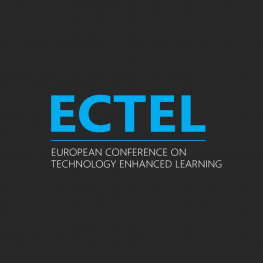Speakers
Luis P. Prieto
Universidad de Valladolid, SpainMarlene Wagner
Danube University Krems, AustriaStart
07/09/2023 - 16:30
End
07/09/2023 - 17:30
Session 8: Learner Well-being
Chair:  TBD
TBD
Designing technology for doctoral persistence and well-being: Findings from an two-country value-sensitive inquiry into student progress
Luis P. Prieto, María Jesús Rodríguez-Triana, Yannis Dimitriadis, Gerti Pishtari and Paula Odriozola-González
Abstract: While doctoral education suffers from widespread dropout and well-being problems, we have not yet found scalable and generalizable interventions to address them. This paper characterizes these problems as amenable to technology-enhanced learning (TEL) interventions and derives design knowledge for such solutions. We conducted two iterations of value-sensitive contextual inquiry into how technology could support doctoral progress, well-being and persistence, with 19 doctoral students from multiple disciplines in Estonia and Spain. Our quantitative and qualitative analysis of questionnaires, interviews and diary data confirms prior research about the importance of perceiving progress in the dissertation materials. They also highlight the uniqueness and self-direction of the doctoral journey, and particular (but well-defined) external factors that could be targeted by TEL support. Our design-oriented findings can inform the development of multiple TEL solutions to address these problems. Further, the particular methods used to elicit these findings both illustrate the added value of value-sensitive design for the field of TEL, and provide now-scarce examples of techniques that can be used to be mindful of stakeholder values when designing learning technologies.
📄 Read More: https://link.springer.com/chapter/10.1007/978-3-031-42682-7_24
Here or There? Differences of On-Site and Remote Students’ Perceptions of Usability, Social Presence, Engagement, and Learning in Synchronous Hybrid Classrooms
Marlene Wagner, Gerti Pishtari and Tobias Ley
Abstract: Synchronous hybrid classrooms, where on-site and remote learners participate simultaneously in instruction, offer organizational and pedagogical advantages, but are also associated with pedagogical and technological challenges. To date, there are few empirical studies which investigated the use and impact of synchronous hybrid classrooms on students’ engagement and learning. Prior studies have primarily targeted higher education contexts and often involved emergency scenarios during the pandemic. The aim of the present study is to evaluate a non-pandemic related, systematically developed implementation of the synchronous hybrid classroom in four HIDDEN vocational high schools. This paper presents results from students’ perspective about the usability, social presence and the impact that the synchronous hybrid classroom had on their engagement and learning. We collected data from 241 students who either participated on-site (n = 129) or remotely (n = 112). Results from independent sample t-tests showed significantly higher levels of usability, social presence, and perceived learning for on-site students as compared to their remote peers. Students’ sense of social presence and their usability perceptions turned out to be significant predictors of students’ perceived learning. Enhancing social presence in synchronous hybrid classrooms and improving the usability of the technology used can therefore be seen as important steps for maximizing its impact. In the short term, there are some techniques to achieve these steps; in the long term, however, research should also focus on teacher practices to foster successful implementations of synchronous hybrid classrooms.
📄 Read More: https://link.springer.com/chapter/10.1007/978-3-031-42682-7_30


